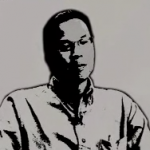Digital Literacy and Multiliteracies
Looking for Luke

After reading the two articles this week I was led down the path to look for Luke – Allan Luke.
I had previously used a specific video clip in a staff pd session where Allan Luke spoke passionately about the future of education and learning. This video opened a deep, rich conversation about what the school was teaching, how it was teaching and looking at ways to do it better. So once I saw the name in the list of collaborators in the New London Group (NLG), and in the reference list in Dobson & Willinsky, I started searching for Allan Luke.
(clip found here: http://resources.curriculum.org/secretariat/may31.shtml You need to scroll down, the full video covers content included in all the shorter ones.)
The message from the NLG and from Dobson’s article that captured my interest spoke of the hope to be found in new media and digital literacy. Dobson & Willinsky’s statement that “Digital literacy does appear to be leading to greater literate participation in a wide range of activities, brought on by the ease of writing, greater linking of ideas and texts, and at least the promise of universal access to knowledge.” (p. 21) led me back to the idea of opening the classroom to external, global sources of information and experiences. Critical learning experiences can become ‘big ideas’ within the classroom and can lead learning in purposeful, engaging ways.
The NLG presented four complex, integrated pedagogical factors that reflected new and current directions in educational practice in Ontario.
1. situated practice by designing experiences
2. overt instruction through explicit metalanguage
3. critical framing with purpose for social context and
4. transformed practice where students are transferring and creating (pg. 83)
These concepts are visionary, not yet fully embedded in every classroom, but being put into practice through PLC (professional learning communities), TLCP (teaching learning critical pathways) and incorporating ‘big ideas’ throughout school communities in the province.
Dobson & Willinsky’s idea of linking ideas and texts connected, in my thinking, to the NLG’s concepts of hybridity and intertextuality. (p.82) Teaching should provide experiences to create and innovate (hybridize information) and build connections that break down boundaries between subject areas (interdisciplinary), forms of texts, modes of presentation, and cultural dialogues.
Through the readings and connected videos I will agree that there is an urgent need to expand and deepen our definition of literacy and how, as Luke stated, that we connect it to everyday, cultural contexts for our students and extend these to global cultural experiences.
References:
Dobson, T. M.,& Willinsky, J. (2009). Digital literacy. Draft chapter for the Cambridge Handbook on Literacy.
The New London Group. (1996). A pedagogy of multiliteracies: Designing social futures. Harvard Educational Review 66(1), pp. 60-92.